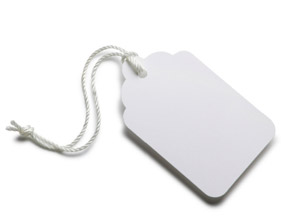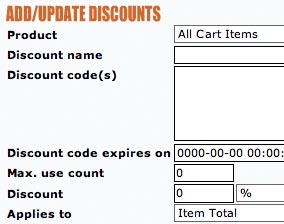What We Learned Publishing Digging Into WordPress

Digging into WordPress is an entirely self-published book. It’s not that way because we just arbitrarily decided that self publishing was hip and that was what we were going to do. In fact, the plan early on was the opposite. Step one, we thought, was to write the book. So we did that. Then step two became find publisher to publish it, so we asked around. We talked to five (or so) tech book publishers.
We learned in these talks with publishers that our Step One (write the book), is almost never Step One. Step One is actually get in contact with publishers and work with them from the beginning, from building out the Table of Contents outwards. We quickly learned that in working with any publisher, you gotta play by their rules. They have a process, that process works for them and the authors that choose to work with them. We were very green to this whole process, but we agreed that we didn’t want to work in the confines of someone else’s process. Call us stubborn, but we wanted to do whatever the heck we wanted with this book. And we had the tools to do it. Self publishing it was.
Here are some things we learned.
100% vs. 10%
 Going through a publisher, we might have earned 10% of the sales of the books. Self publishing we earn 100% of the sales of the books. Going through a publisher means many of the costs are covered, like printing costs. Self publishing means paying those costs ourselves. Going through a publisher means they will help promote the book, and the book will be available in major book retail stores. Self publishing means all promotional work needs to be done by us and the book will only be available for purchase online.
Going through a publisher, we might have earned 10% of the sales of the books. Self publishing we earn 100% of the sales of the books. Going through a publisher means many of the costs are covered, like printing costs. Self publishing means paying those costs ourselves. Going through a publisher means they will help promote the book, and the book will be available in major book retail stores. Self publishing means all promotional work needs to be done by us and the book will only be available for purchase online.
These comparisons were the hardest to consider. Even today, since we have very little to compare against, we don’t know which route would have been more successful. However, I have a strong feeling that self publishing was the right move and ultimately made the project more successful. I also believe that this was only the case because Jeff and I had large enough built-in audiences to give the book some momentum. If we didn’t have that, I feel going through a publisher would have been a better choice.
Since the 100% vs. 10% was pretty close to a toss up (we did plenty of scratch-pad math) we decided that since we could do everything our own way by self publishing, we would go that route. Not to mention it would be fun and we would learn a lot doing it.
Should We Print At All?
 With the proliferation of digital book reading devices, it was a possibility to not make a paper version of the book at all. This would have been much easier from a distribution perspective. We also would have prevented any potential loss in case the book was a flop, since there would have been very little upfront cost other than our time and a few fonts we bought. And think of all the advantages to a digital book: searchable, copy-and-pasteable, easy to keep your place, links that are actually live and clickable, etc.
With the proliferation of digital book reading devices, it was a possibility to not make a paper version of the book at all. This would have been much easier from a distribution perspective. We also would have prevented any potential loss in case the book was a flop, since there would have been very little upfront cost other than our time and a few fonts we bought. And think of all the advantages to a digital book: searchable, copy-and-pasteable, easy to keep your place, links that are actually live and clickable, etc.
We decided that we were going to print (in addition to selling the PDF alone) for two strong reasons. 1) There are going to be some potential buyers that would only be interested in the print version and 2) It would be fun to have a real tangible product from our efforts.
We can now absolutely confirm that there is an audience that is only interested in print books. We have printed the book four times with three updates (another in the works), and whenever we sell out between printings we get plenty of email asking us when the print version will be available again. These same people aren’t just blowing smoke, they very often follow through on buying the book when it’s back in stock.
We made one more decision about selling print books: if you buy the print book you get the digital copy for “free.” Free in quotes, because of course money is changing hands, but there would be no price adjustment for it’s inclusion. It’s tempting to sell a book that comes both ways in three configurations: print book only, digital book only, and combo. The combo being the most expensive. I feel strongly that pricing the combo higher than the print-book-only is a douche move. It costs exactly nothing to send out a digital copy of a book.
Unique Printing Choices
 Because the printing choices were ours to make, we could do some cool things. First, we picked an unusual paper size, landscape, because we wanted big fat margins in which to insert notes and things in the book’s design. Second, we chose to spiral-bind the book instead of a traditional book bind. This would almost certainly never be allowed in a book headed to a bookstore, as there is no spine to identify it when placed normally on a bookshelf. Third, we made the book color-throughout. Only one publisher was receptive at all to this idea when we brought it up and they may have just been humoring us.
Because the printing choices were ours to make, we could do some cool things. First, we picked an unusual paper size, landscape, because we wanted big fat margins in which to insert notes and things in the book’s design. Second, we chose to spiral-bind the book instead of a traditional book bind. This would almost certainly never be allowed in a book headed to a bookstore, as there is no spine to identify it when placed normally on a bookshelf. Third, we made the book color-throughout. Only one publisher was receptive at all to this idea when we brought it up and they may have just been humoring us.
We haven’t gotten much feedback on the size or shape, although I personally feel I wouldn’t go as wide again, it’s a little unwieldily while open (would be very hard to read on a plane). People do really like the spiral bind though. It’s nice that gamble paid off.
Pricing
 Pricing the PDF was a bit tough. It’s hard to price something where there are no physical production or delivery costs. For the PDF, our cost involves time spent working on the book and stuff like PayPal fees, E-junkie fees, software, fonts, domains, advertising, and other odds and ends. After looking at our expenses, we priced the PDF by coming in just a little cheaper than comparable PDFs. Rockstar WordPress Designer is priced at $29 and our PDF is $27. We thought this sounded like a fair price. It’s not giving it away and it’s not overly expensive compared to other tech books.
Pricing the PDF was a bit tough. It’s hard to price something where there are no physical production or delivery costs. For the PDF, our cost involves time spent working on the book and stuff like PayPal fees, E-junkie fees, software, fonts, domains, advertising, and other odds and ends. After looking at our expenses, we priced the PDF by coming in just a little cheaper than comparable PDFs. Rockstar WordPress Designer is priced at $29 and our PDF is $27. We thought this sounded like a fair price. It’s not giving it away and it’s not overly expensive compared to other tech books.
Now we had a basis for figuring out the print copy prices. The per-book printing quote was quite high as expected. We had a lot working against us. We wanted full color. The page count was fairly high (averaging 400 pages). Our quantity was low (the more you print, the cheaper they are each). We wanted to sell out. Going too high on quantity with no experience means money tied up or lost in print sales.
The number we ultimately came up with was $67. It felt better than breaking the $70 level (although in later editions we had to come up to that). It still felt high, but still, some tech books are just damn expensive. At this price point we made slightly less profit than selling a PDF, but comparable.
We simply had to come to terms with these pricing realities. The book was going to be expensive. It was, we decreed, only for the most serious of buyers. And hey, everyone still gets all the great stuff other expensive tech books likely don’t give you: full color, “free” PDF, exclusive themes, lifetime updates, spiral bind, not to mention general quality.
Caught Up in Discount Codes
 Every time we do any kind of promotion or sale, we see a rise in sales. I don’t think there is any doubt that discount promotions work. A common way to do that is to provide coupon/discount codes. We sell the book through E-Junkie which is a distribution/affiliate service that provides that functionality.
Every time we do any kind of promotion or sale, we see a rise in sales. I don’t think there is any doubt that discount promotions work. A common way to do that is to provide coupon/discount codes. We sell the book through E-Junkie which is a distribution/affiliate service that provides that functionality.
We made one-off discount codes for certain folks in certain scenarios. We made discount codes for other blogs when they wanted to do a review or giveaway for the book. We made discount codes for our own site. We made discount codes to be included in bundles. Sometimes Jeff would just sit back there and make up imaginary discount codes and then delete them for no reason.
This is what I would suggest to anyone selling a product where discount codes are involved. Pick your lowest level of discount code. Say 5%. Give away a unique discount code of this level to anyone who asks, be it a single person, organization, website, whatever. Set them to never expire. The information you get from how used these codes are is worth the 5%. If you ever make a code that is for more than that lowest level, make sure it expires and the person you give it to knows that so if they publicize it that information is present with it.
With a strategy like this, you can generously give away codes without having to think too hard about it or worry about them being abused in any way.
Editing Woes
 The very first edition of this book was rife with errors. Only a few technical errors, but plenty of spelling, grammar, and formatting issues. Isn’t that what the editing process is for? It sure is. We didn’t skip that part either, it’s just that we didn’t take it seriously enough. We relied on friends, family, and ourselves to read through the book, catch errors, and provide notes. We are hugely grateful for their help, because without it, that first edition would have been much worse.
The very first edition of this book was rife with errors. Only a few technical errors, but plenty of spelling, grammar, and formatting issues. Isn’t that what the editing process is for? It sure is. We didn’t skip that part either, it’s just that we didn’t take it seriously enough. We relied on friends, family, and ourselves to read through the book, catch errors, and provide notes. We are hugely grateful for their help, because without it, that first edition would have been much worse.
After the release, emails started coming in pointing out problems. These emails were responded to as promptly and nicely as possible. People that take the time to report problems are excellent customers and responding to their emails with the utmost respect will hopefully keep them that way. Thanks to all of the editing help we received from many generous people, the next update produced a much higher quality, more accurate book.
At first, we tried responding to errata emails as they rolled in – checking and fixing errors sort of on the spot. With everything else going on, we soon decided to automate and simplify the errata process as much as possible. Our errata system is now threefold: 1) setup an official Errata & Changelog page to help streamline communique, 2) tag incoming errata email as such, and 3) check & fix all errata at the same time, during book updates. This system helps to save time by keeping things streamlined, efficient, and thorough.
After putting up the Errata submission page, we encouraged people to use it. Later, when the print book came out, we gave folks that did the most work in finding errors free copies.
With each update, the accuracy of the book continues to improve. At first, we were inundated with editing woes, but I think we reacted well to the the situation and ended up with a solid book that continues to evolve. Looking back, we probably should have been more thorough with the initial editing process.
Customer Support
 When you sell a thing, you are pretty much required to do customer support. I can tell you I didn’t have any idea what we were getting into in this regard. People don’t get download emails. People wonder about shipping status. People wonder what the charge is on their credit card. People find a discount code after purchasing. We get a pretty darn healthy load of email. As we all know, email = work. You have to manage it well otherwise answering email turns into the only thing you do.
When you sell a thing, you are pretty much required to do customer support. I can tell you I didn’t have any idea what we were getting into in this regard. People don’t get download emails. People wonder about shipping status. People wonder what the charge is on their credit card. People find a discount code after purchasing. We get a pretty darn healthy load of email. As we all know, email = work. You have to manage it well otherwise answering email turns into the only thing you do.
To handle email activity, we created a single and shared email address. We use the free Google Apps. We both have access to it and share in the responsibility of answering those emails. We label things and mark things for each other as needed. This system works exceptionally well for us.
One sometimes-not-so-obvious thing to help manage customer support is to find ways of streamlining the process. Take advantage of any tips or techniques that help you save time when dealing with your customers. Eliminate needless steps and bottlenecks. Do anything you can do to help the customer more while working less.
One specific way that we have improved response time involves using email templates for common inquiries. For example, we now have quick, copy/paste templates to respond quickly to requests for invoices, passwords, account updates, book updates, and so on. So when a customer asks, “can haz update?” – the answer is a speedy, “click, click, here, click.” Everybody is happy.
Another example of improving the customer experience is switching from a paid, third-party distribution program to our own home-grown system. Paying for PDF updates/distribution worked well at first, but the cost for sending out each new update is pretty high, so we eventually decided to move that part of the process to our own site. Now, instead of paying a hefty fee to send out update email links, we just upload the new version to the Members/Download Area and let people grab current versions of the book and themes at their convenience.
And when it comes to shipping physical goods, using a shipping service that provides tracking is a must. Nothing beats the feeling of being able to tell worried customers the exact location of their merchandise.
Another one that is easy to forget: customer support is a great opportunity to make someone happy. They might not come to you that way, but if you help them out in a big way and fast, they can leave the experience an evangelist for you.
Affiliate Program Ups and Downs
 E-Junkie provides an affiliate program for products you sell through them, which you can opt in to. This was a selling point, as when done properly, an affiliate program is a win-win for you as the seller and affiliates. We decided we’d give 50% of all PDF sales to the affiliate, which we thought would garner big interest in the program. And why not? There is a good chance the affiliate is reaching people that we could never reach on our own. And since the PDF costs less to produce or deliver, we’re still making money. When the print book came out, we adjusted the percentage so that the affiliate would earn the same ~$13 no matter which option someone chose, the print book or PDF.
E-Junkie provides an affiliate program for products you sell through them, which you can opt in to. This was a selling point, as when done properly, an affiliate program is a win-win for you as the seller and affiliates. We decided we’d give 50% of all PDF sales to the affiliate, which we thought would garner big interest in the program. And why not? There is a good chance the affiliate is reaching people that we could never reach on our own. And since the PDF costs less to produce or deliver, we’re still making money. When the print book came out, we adjusted the percentage so that the affiliate would earn the same ~$13 no matter which option someone chose, the print book or PDF.
One problem with our affiliate program is the way the links work. For the tracking to be done properly, the links that affiliates use go to e-junkie.com first, then are redirected to our website. That means that we get no SEO benefit from the links. If we took all the money that we paid out from the affiliate program and did things like send out more free books to “influential” folks perhaps we would have gotten more “natural” links and better SEO. Would we have made as many sales? Who knows.
A much larger problem is abuse. In the last few months some very nasty affiliate program based fraud has popped up. This is how it works: a bad guy has a bunch of stolen credit card information. They sign up for our affiliate program (which has no way to hold new affiliates until approved, they are just automatically approved). They click on their own links. They use fake information and the stolen credit card information to buy a PDF book from us. This earns that affiliate account the 50%. At the end of the month, unsuspecting affiliate program operators pay out all affiliates without cross referencing anything.
We are onto the scam now, but I’m not proud to say we paid out a number of months to these scumbags. Ultimately we have had to close the program until we can get time to switch a better system.
Homegrown Shipping
Another thing to throw on the pile of self-publishing responsibilities is a shipping system. For every print book ordered you need to:
- Make sure you have a book (inventory control)
- Box it up nicely so it protects the book well but don’t overdo the size and weight
- Create a shipping label
- Fill out international paperwork if necessary
- Apply a return address
- Take to shipping facility
- Pay for shipping
- Get tracking information to those who need/want it
As well as…
- Help customers with shipping issues
- Don’t screw up and miss any
 This is a huge undertaking. Luckily we’ve had the help of both of our families in this endeavor. I think we can safely say more time has been put into this than the creation of the book itself.
This is a huge undertaking. Luckily we’ve had the help of both of our families in this endeavor. I think we can safely say more time has been put into this than the creation of the book itself.
The first few rounds of books we shipped via Media Mail. We were told this was the most cost effective possible way which seemed about right since each book came in I think under five bucks to anywhere in the United States. There were two problems with Media Mail: you can’t make those type of labels online and you also can’t get tracking information on them. We thought the good price was the most important thing, since the book was already so expensive.
As we should have known, price isn’t everything. Turns out choosing a different shipping option where we can create labels online and provide tracking information is far more valuable both for us and to customers. So that’s what we do now.
International shipping is another big issue. It’s just dang expensive to ship a book as a one-off overseas via any major shipping service. Our book, now priced at $70, is often over $100 when international shipping is applied. Also, we’ve had more issues of books not arriving (and some fraud) with international orders. At some points we’ve shut off international shipping. But now that we’ve got tracking (and insurance) going, it’s nice to be able to have it opened up, since there is certainly some demand for it. I also think, with the book already being so expensive, if you can afford that you can afford the shipping.
And what about profit? We don’t make anything from shipping. We have it adjusted just so in E-Junkie so that what we charge for shipping is pretty close to what we end up spending. It’s adjusted so that it’s ever so slightly higher so we don’t end up losing money, but like I said, it’s pretty close. I like that. It feels honest. I would feel shady if we tried to eek more profit out of a tack-on cost.
Little ideas that worked out great
Short URLs – Using a good Short URL plugin allowed us to use a short URL for all of the links in the book. This helps to keep book links consistent, easy to typeset, plus it also provides useful clickthrough information. Another bonus is that if the link on the other end went dead, we can redirect it somewhere else that’s actually useful instead of the user ending up somewhere useless.
Book Index – Something that may save you time is skipping the book Index. We originally invested in some indexing software and put a bunch of time into building an index in the back of the book. As we continued to do updates, sometimes those updates would shift the page numbers around, which made keeping up the index ridiculously difficult. We ditched it. Nobody cared.
Google Docs – It may not need mentioning, but Google Docs is another extremely useful collaboration tool that we used while writing the different chapters and putting things together. Rather than volley a swarm of emails back and forth, we set up a Google Docs account and later a Dropbox folder for transferring layout/design files. Taking advantage of these types of tools and services is a great way to collaborate on projects.
Book Website – More than a “little” idea but worth mentioning somewhere in this post is the book’s companion website, DigWP.com. Having some sort of online presence is must for any project, so for the book, we decided that a WordPress blog would be an awesome thing to do. We already post tons of WordPress stuff at our other sites, so having a dedicated place to keep it all focused turned out to be a great way to build context and add value to the book.
Free Themes – People love free stuff. We love building WordPress themes. Turns out that giving away free WordPress themes at our Theme Clubhouse is another great way to add value to the book. We also have a growing collection of exclusive themes just for customers.
Stop, Thief!
 As we’ve all learned from the music industry, trying to prevent sharing and theft of digital files is nearly impossible. From the get-go we knew that. We did toy around with some theft-discouragement ideas though. E-Junkie has a PDF stamping feature where a downloaded copy would have the persons transaction ID on it, so if a file got lose on a sharing network we could look up who it was. Turns out that feature in E-Junkie doesn’t work very well (takes too long to generate the stamped PDF and the link is broken if people move through checkout at an average/fast pace). And besides, what would we do if we found someone who did that? Send them a mean email?
As we’ve all learned from the music industry, trying to prevent sharing and theft of digital files is nearly impossible. From the get-go we knew that. We did toy around with some theft-discouragement ideas though. E-Junkie has a PDF stamping feature where a downloaded copy would have the persons transaction ID on it, so if a file got lose on a sharing network we could look up who it was. Turns out that feature in E-Junkie doesn’t work very well (takes too long to generate the stamped PDF and the link is broken if people move through checkout at an average/fast pace). And besides, what would we do if we found someone who did that? Send them a mean email?
The PDF has been posted for download on sites of all kinds. We’ve done some fighting against those sites. We’ve won some. We’ve lost some. Nothing to lose any hair over. Plenty of honest people bought the book and continue to do so.
We have one really excellent fighting technique and that’s the fact that we offer free updates to the book and its support materials to legitimate purchases. Thieves obviously don’t get this courtesy. And the more times we do it, the harder it is to find the most current version online to steal.
Working with a Co-Author
Holy crap we’ve covered a lot of ground haven’t we? Has it struck you how much work all this has been? Thankfully there are two of us working on this. I’m 100% certain that the book is better than twice as good because there were two of us. We sold more than twice as many as either of us alone could have sold. We’ve only gone half as crazy as we would have otherwise.
That’s all, folks
If you have any other specific questions about self publishing, let us know in the comments.
33 responses
-
I can see the shipping being something people overlook. I built custom furniture that was shipped around the country for many years. As you mentioned, you can really spend a great deal of time protecting and preparing a shipment. After all, replacing damaged items slowly eats away at profits.
Q: How close were you on estimating the number of sales and what method did you use/or would you use differently? (ie: did you take a percentage of estimated WP developers?, look at other related book sales?, etc.)
-
DiW book is amazing. We have promoted it successfully throughout our site, and will continue to do so.
It’s sad that you guys had to close down the affiliate program. I recommend using a 90 day cookie rather than 30 day. This would save you from the scumbag frauds…
Another method would be letting a 3rd party do your payments. Clickbank is one, but recently I have found out about a cool program known as Impact Radius that is started by the original guys of CJ.com….
They are really reasonable, so you should definitely look into them. We are promoting some products using their network and quite honestly like them the best even though it means we get payments 90 days after we made the sale… but its still a win-win :)
-
Does anyone know when a print version will be available? I have the digital copy…but the print version is just so darn snazzy, I’d love it.
-
Great book and look forward to each update, you’ve helped me launch several new wordpress sites.
I never knew there was so much to writing your own book but you guys have learned a lot from this and thanks for passing it on to us mere mortals.
-
have to say guys well done…
some amount of work that went into the book! god dang!
applause for you both.. Im still waiting on the boss getting the studio a few copies, but im hanging in their :) (did get the PDF) but still Daquan said..
“the print version is just so darn snazzy,” -
Wow, great post. The book is awesome. Thanks for sharing all this valuable knowledge.
-
Great post Chris.
How come you guys didn’t use some kind of drop shipper? There is no way I would want to deal with the shipping.
I’ve run into the same issues at work with affiliates and stolen credit cards. Luckily our affiliate sales aren’t huge so it was easy to spot.
There is only so much you can do to stop piracy. We’ve tried a few things which have stopped some people but it’s still doable. I agree that there are better things to put your time into as most of those people probably wouldn’t be customers anyways.
-
I love the book. I’m so glad you wrote it and decided to share it with us on your own terms.
Thanks so much for going through all that work just so I (ok, and a bunch of other people too) can have a truly exceptional WordPress guide.
-
All the hard work was definitely worth it in my opinion. I have used it (and still do!) so much, and so often as I have been designing my own themes. Reading it from front to back, there are often little things that I picked up that couldn’t easily be found elsewhere. Your knowledge has been impeccable. Thank you.
-
unbelievable book. great job guys.
-
What an amazing post! Thanks for taking the time to share these learnings… loved the behind the scenes peak at your self-publishing process. (And loved the book too, of course)
-
The book is great! Gotta love the self publishing of a book on a platform that allows people to self publish on the web. Hopefully the effort was worth it for you guys financially and you feel the urge to keep up with the sites you produce and the great content.
Thanks!
-
What a great write up. I am going to get the PDF shortly. I hope that this was worth while and that you all profited from the writing/creation of what seems, from the other comments, to be a great WordPress resource. Can’t wait to read it.
-
Piracy is a fact of life for traditionally published books, too. The WordPress Bible, for instance, showed up on Usenet in PDF format pretty quickly. And print review copies sent to journalists at allegedly respectable publications frequently make their way into the used bookstores to be re-sold for pennies a copy, with not even a review to reward the author’s efforts.
But any time someone reads your work, it adds to the likelihood that someone–that reader or another–will buy a legitimate copy. Initial studies suggest that piracy or deliberate free releases of e-books increase print sales.
That said, I think your “free upgrades for life” policy is one of the best incentives I can think of to purchase a legitimate copy of the book. (Which I did, the edition before this one, in print.)
-
Interesting read! I hope your next book is a how-to guide like this. It would have been interesting to see your take on PDF security, ISBNs and using Amazon as a distribution method.
Anyway, top read!
-
The post is great, thank you! :) It’s exactly what I was looking for…
What I’m still missing is some info on the distribution for amazon, iBook, etc.Your book is terrific too, by the way! I received it as a gift and I enjoyed it a lot :)
-
One of the best tech books I own! Hope you guys made a crap load of money off this cos you deserve it, the quality and quantity of the information is amazing! Really helped me to understand wordpress at a deeper level. Thanks!
-
Did you really ditch the index because you had problems when the pages shifted?!?!?! What kind of software did you use to write the book? I do not know anything which will force you to write the index *by hand*.
-
Thank you for this post (and the book too), it’s awesome help for self-publishers. My question: Is the book’s pdf directly from Google Docs or did you need some conversion tools?
-
Well explained!
-
I didn’t buy the printed book, only the pdf. But I think the size is great! I imagine that with the spiral binding, reading on a plane or elsewhere shouldn’t be a problem since it easily “folds in half”. But for a pdf, it’s perfect. I typically like to read book style pdf’s on my iPad, and this format fill the screen perfectly with no vertical scrolling. I really like that!
-
Thank you – Thank you! I love the book, love the post and read your website regularly –
A fan -
Hi,
You created a nice WordPress book. Will there be an update for the recent WordPress 3.1 release? I’m sure you guys have more to share in this newer release. Thanks for publishing this book.
Have a great day ahead.
-
You got very interesting debate started on your post and its worth a lot of comments. Very less people are able to talk so well about this issue. A big thumbs up from me.
-
I really like pdf version and i wanted to buy printed book but shipping cost is high 70$ for book + 50$ for shipping thats crazy and only reason why i didnt ordered book. I hope shipping cost will be lower this time.
-
Guys,
I have to say, this post convinced me to read your book (pdf). You’ve demonstrated how well thought out you approach things, how you learn iteratively, how clearly you communicate, and your style.
I’m looking forward to reading it.
David
-
I just want to point out one huge reason why I want the new hard copy version.. The spiral bound..I saw that post on why you did it and I was thinking I always wanted this..in textbooks and other books its a rare to get this…Of course the other reasons are there but this one thing sells me over the PDF..Plus one more pitch for hardcover..even the best of us get tired of reading online..its nice to have information to read offline..:)
-
I for one LOVE having both the digital and print versions. I already owned the pdf version. The print version was out-0f-stock but I planned to buy it when available. Got lucky winning a discount on your recent promotion.
As a published author of 15 non-fiction books, I understand the trials, tribulations, joys and hurdles you experienced. While the others were published by traditional publishers, including Writer’s Digest Books, due to an unusual set of circumstances I chose to self-published my first book, too. What you describe in this post is right-on.
Many thanks for sharing your experiences and offering such heartfelt advice and useful suggestions.
-
I love the book, amazing job, but was wondering if you are ever going to make an ePub version? I don’t have an iPad yet (I was waiting until version 2) but on my iPhone4 I cannot select and highlight text, etcetera on the PDF version so I suspect an ePub version will be more usuable. Although I am eligible for the free upgrades of the book I would happily purchase an ePub version if more features were activated. I tried to convert it myself for personal use but it didn’t reflow or format pictures etcetera faithfully enough. I look forward to your reply.
Peace and blessings always,
-
I LOVE the shape of the book, please don’t change it. The only thing I would improve is to have hard covers and perhaps thicker paper. The hard covers would make it more practical for reading on your lap, and thicker paper could just make it seem more high quality (but I love it anyway).
-
What a great article for anyone who is looking to write and publish a book. I have a brother who just wrote a book and self published. It’s in the health and wellness arena. I’m definitely going to forward this post on to him.
-
Have you thought of Print on Demand? You would never be out of copies. lulu.com would be the way to go.
I have the pdf version on my kindle. Would also love a more Kindle specific version.
Any thanks for a great book and a great blog.













